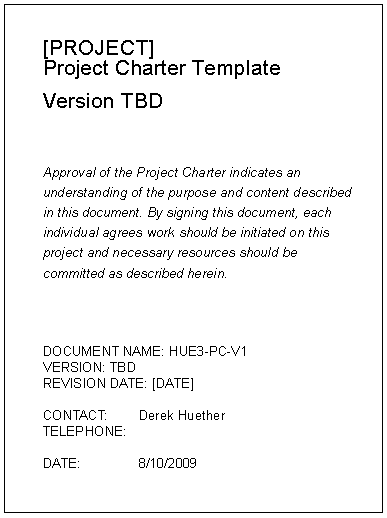What is an A3
An A3 is more than an 11 x 17 inch piece of paper that is structured into several sections and not all A3's are created equal. An A3 is a structured problem solving and continuous improvement approach, first employed at Toyota and typically used by Lean manufacturing practitioners. What your A3 looks like depends upon the situation. The example below consists of the following pattern, as part of an Agile Transformation:
Current Situation & Problem
Root Cause Analysis / Conclusion
Goal
Corrective Action
After we agree on the four steps, we're going to implement the correction action and then verify the results. The content of an A3 follows the logic of the Plan-Do-Study-Act (PDSA) cycle. What I want you to take away from this blog post is not so much TQM, PDSA, and A3's, as much as how you could benefit from them when doing an Agile transformation or any kind of process improvement.
A3 Report Example
When doing an Agile Transformation, I'm going to always cycle back to 3 core goals.
Form complete cross functional teams
Build backlogs
Deliver working tested software
Anything that gets in the way of doing these is an impediment that has to be removed. The example I have above describes how a team is under-committing each sprint. We're using a story point completion ratio to know if the team is delivering working tested software. We're going to use this single page to have a shared understanding with our client and agree on a course of action. Now, I'm not saying you have to use this template. If you can remove an impediment informally, by all means, do it! But, to make sure my client agrees there is a problem that needs to be prioritized and addressed, this is an effective tool and it's pretty lightweight. You may also notice I don't call this an A3 on the actual example. I'm going to call it an Action Report so my client feels comfortable with common language and I don't need to distract them by introducing Lean terminology. When I say "A3", there are certain expectations. Let's not get hung up on that and just call it an Action Report going forward.
Flow of the Action Report
You'll notice that I structured my Action Report so that your eyes will be drawn to sections. I want to compare 1 and 3 (Current Conditions and Goals) and 2 and 4 (Root Cause Analysis/Conclusion and Corrective Action). This allows a transformation consultant to note impediments and identify root causes independently but then be prepared to collaborate with the client on goals and corrective actions. I'm going to stress this again. We're only going to go through this process if the consultant can't resolve the issue informally. If not, he or she will need to collaborate with the client to confirm the goal and agree on an appropriate action. The consultant doesn't do all of this in a vacuum. When looking at action (or A3) reports used by others, I've seen them identify the goal prior to looking for root cause. From my experience, if I'm required to identify the goal before moving forward, this may create an unnecessary delay. If I don't think something is right, I'm going to start investigating right away and then circle back with the client to validate their goal. But, I'm not going to stop and wait to be told what their goal is before beginning to look for root cause. I don't want to stop until my personal curiosity is satisfied. Also, I'm not saying to not collaborate with the customer. I'm saying keep moving forward on multiple fronts and to circle back at the first logical opportunity.
Current Conditions
We have several opportunities during the transformation to get this information. It could be, we just completed a formal assessment of the team or organization. Maybe we just reviewed metrics of the team or organization. Maybe I just walked out of a really long and unproductive meeting. Whatever we did, I'm looking for some kind of objective criteria or indicator to describe the condition.
Root Cause Analysis / Conclusion
In order to propose appropriate corrective actions, we need to identify the root cause of the condition. Avoid using logical fallacies like anecdotal, appeal to emotion, or false cause. I like to use Socratic method or ask the 5 whys to help reach the root cause.
Goals
The goal listed above in the illustration focuses on getting a team's story point completion ratio to 100% +/- 10%. This goal is pointing back to building backlogs and delivering working tested software. By getting the teams to keep their commitments of delivering working tested software regularly, we allow the business to make better commitments to their customers. If we can build that trust and safety within our organizations, we'll start to build balanced systems.
Corrective Actions
Identify corrective actions that is both short term and easy to implement. If the actions are neither, I keep a higher level corrective action around and then break it down so I can incrementally work toward the goal. Personally, I keep my daily activities on a Kanban board. For an overall transformation, I keep the actions and activities in a rolling 90-day plan. This keeps the client informed on what value I've delivered and what value I plan to deliver in the coming weeks/months.
Plan Do Study Act in an Agile Transformation
When doing an Agile Transformation, PDSA is just one pattern to map the approach. Not mentioned in this blog post are the original inputs into the initial coaching plan and 90-day plan. (both of which are collaboratively defined and continuously evolved with the client). But, how do I fit it all together in a high level "plan do study act" process, more emblematic of the original A3 process? I use the following:
Coaching Plan (Plan)
Rolling 90-Day Plan (Do)
Adoption Assessment (Study)
Metrics (Study)
Action Report (Act)
Inputs and Outputs of an A3 Report
Summary
I hope this provides some insights into how you can take some of the hand waving out of your next (or current) Agile transformation. There are a lot of moving parts and you need the process and tools to keep an eye on your goals and manage progress, without adding so much overhead that you stifle the forward momentum. Let me know if you have questions!
Download a free copy of the A3 Report Template









 Though I haven't uploaded any new templates today, I did fix some broken links. Thank you PJ for bringing it to my attention. The
Though I haven't uploaded any new templates today, I did fix some broken links. Thank you PJ for bringing it to my attention. The 
